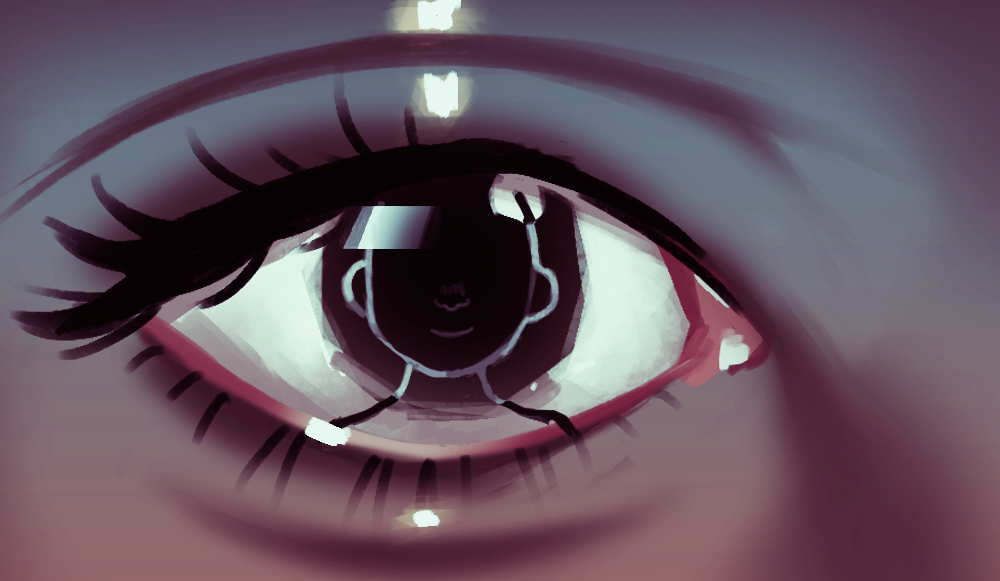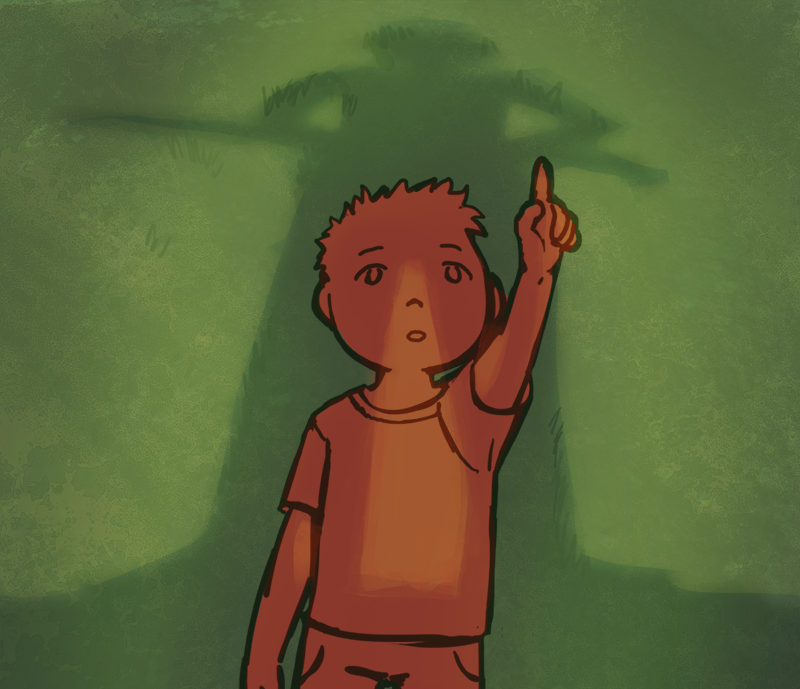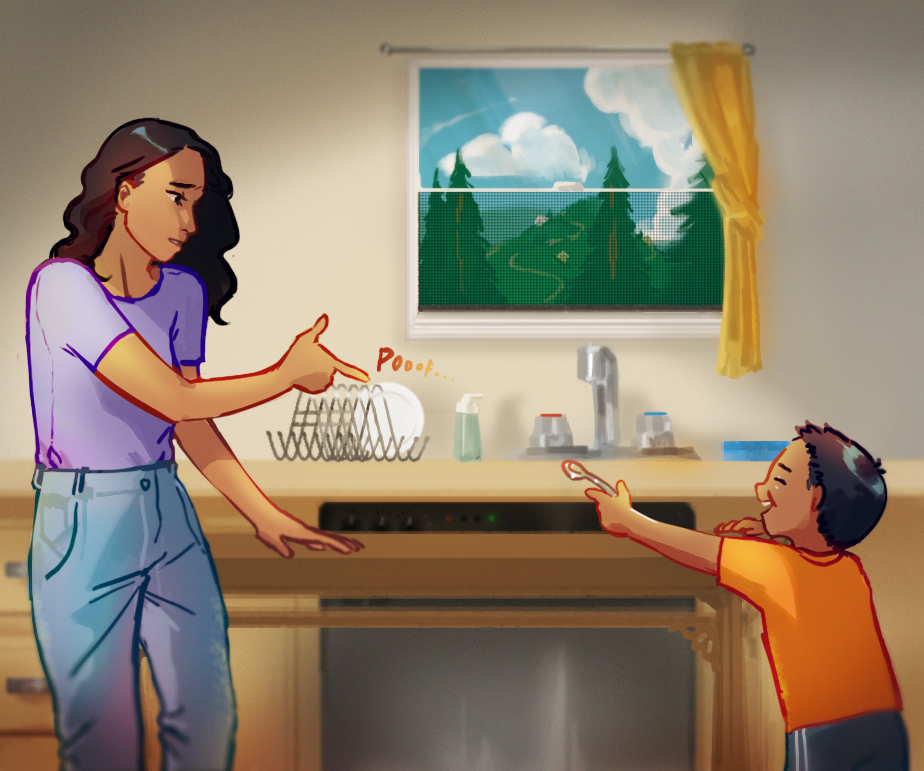One May afternoon, my son Evio and I played with a red rubber ball in the public park at Russell Sage College. We kicked the ball toward one another over the spring green grass. At some point, I kicked the ball too hard and it rolled past him, stopping at the foot of the park’s war memorial. With his two-year-old trot, Evio chased the ball and, just before retrieving it, glanced up at the monument. High on a granite pedestal stood the bronze soldier, holding a rifle low across his hips. On our previous visits to this park, I had invited Evio to view, not this one, but the grounds’ other statue: a woman sitting in an armchair and holding a book. As I approached Evio, who was now staring at the statue, I regretted my careless kick.
When he noticed me behind him, Evio pointed up and asked exactly what I feared he might. He wanted to know what it was the man held. Real guns had remained invisible to Evio, made easy by living in an environment mostly free of unconcealed guns, war, and gang rivalry. We’d be exposed to a pistol only occasionally, holstered against the hip of a police officer. And in these instances, Evio would express interest in the officers’ hats or vehicles. He never seemed to notice the gun. Even though the statue’s rifle wasn’t real, I didn’t want to talk about guns with my child, not when he was so young, and not when I knew more than I would wish to share.
For eight years I had studied armed conflicts, gunrunning, and the prevalence of firearms after war. Even before starting this research, I felt outraged by armed violence as it obstructed peace and security for so many people across the world. As I gathered data over time, outrage settled into despondency. And then I became pregnant. When almost nine months into expecting Evio, my body could no longer carry the weight of both a growing baby and firearms research. As my attention shifted to mothering, I wished I could erase the many images that my research had imprinted on my mind, images that represented the opposite of love and nurture. Famished child soldiers in Sierra Leone and the Ivory Coast. Mayan children coerced by army soldiers to watch the execution of their parents. And closer to home, numerous children caught in the cross fire of gang violence. I wanted to keep those images far away from the experiences of my child. Before giving birth, I boxed my books and data, and I said goodbye forever to the topic of guns.
Or so I thought.
As Evio stood pointing up at the statue’s rifle, he didn’t have to wait long for a response. “A stick,” I blurted and then kicked the ball far away from the monument. We continued to run and play behind the statue’s back without further inquiry.
After that day, I did everything I could to avoid having to tell Evio about guns and the associated violence. I wanted to preserve his innocence for as long as I could. When browsing picture books at the library, I put back those displaying armed cowboys and soldiers. When searching for used toys on Craigslist, I saw Airsoft guns that looked just like assault rifles and impulsively exited the page before Evio could spot them over my shoulder. At preschool pickup time, I saw another mother wearing a T-shirt of Princess Leia holding an enormous blaster, so I put my hand on Evio’s shoulder to guide him in the opposite direction. Gun images pervading our lives challenged me, their frequency mocked me.
•
Two years after Evio first saw the soldier statue, I drove by the Sage College park, as I regularly did on our way home. From the backseat, Evio asked, “What is that?” I looked in the rearview mirror to see his big eyes and small finger pointing at the soldier statue, and I immediately realized what that was. After “a stick” had proven to be a satisfactory answer for him at age two, I had taken for granted that he would ignore that forever. At age four Evio looked at the statue’s gun with newly curious eyes.
As I approached the intersection at the corner of the park, the traffic light turned red. Evio contorted his body to keep pointing at the monument then behind us. I knew he was now old enough to find “a stick” an insufficient response and felt bound to be more accurate in my reply this time. Yet I still resisted by answering, “A statue of a man.” Evio persisted, “Yes, but what is that in his hands?” If the light had been green I might have lied saying, “Sorry, love, I couldn’t see it,” as I drove on. But the light stayed red, so I revealed, “A rifle.” And at that moment, after years of studying other people“s gun stories, I became the subject of my own.
Evio quickly inquired, “What is a rifle?” Not wanting to project my fear, I tried answering casually, as if instead he had asked me about a fire hydrant. “It’s a metal stick that pushes out a small metal ball.” Other questions followed:
“Why?”
“To wound people. Or animals.”
“How?”
“The rifle blows the metal ball out very fast so it can enter the body of an animal or another person.”
“Does it hurt?”
“Yes. And some can die. Some get hurt, others can die.”
With that last response, Evio’s query ceased. I had often reacted similarly to troubling information while carrying out my research. In order to endure the years studying armed violence, I learned to control when to ask, observe and listen, and when to step back. Evio had just stepped back. The rest of the drive went by silently. Even at home, Evio”s silence continued. Instead of worrying and prying into his thoughts, I drowned in my defeat.
•
“Mamá!” Evio’s desperate call woke me two nights later. I went to his bedroom, turned on the light, and saw him sitting up in his bed, upset as if about to cry. I touched his pajama pants; he was dry. Then Evio said in an agitated tone, “I had a bad dream.” I turned off the light and said I’d lie with him. Resting my head close to his, I embraced him with my arm across his chest. After a short silence, he spoke with a cracking voice, “A man was dying another man with a rifle.” My child’s first nightmare. I instantly pictured it, the two men looking like the statue soldier. I caressed Evio’s silky hair and whispered, “I’m here. It was just a bad dream. It’s not real.” All the while I agonized with guilt remembering what I had thrust upon him in the car: “Some get hurt, others can die.”
While cuddling Evio, he fell back asleep, but I could not. Despite great efforts to keep secret from him the harsh reality of guns, I had slipped and stumbled. I needn’t have even used the word “kill” for him to grasp the idea, and for that idea to stand out in his mind instead of the part about animals being shot or the airborne bullet. I resented the red traffic light at the corner of the park. I resented the armed soldier statue. I resented that I had told my son, at such a young age, that people can kill one another.
The next day, as I stood at the bathroom mirror brushing my hair after a shower, Evio planted himself outside the door and aimed a yellow pencil at me. Then he announced, “This is my rifle!” The black and white floor tiles underneath me multiplied in a flash, and an abyss opened between Evio and me. I didn’t recognize him as my own. Evio motioned a silent stab in the air as if to shoot me. I watched in disbelief, then turned to the mirror to continue with my hair before it started to dry and curl. He shot again, so I said with a stern tone, “I’m not going to play like that with you.” He left; I breathed. But the relief was short lived. From that day, I became my son’s shooting target. While checking my e-mail, there was Evio with a pencil, shooting at me. While cooking dinner, there he was, this time with a wooden spoon, shooting at me. I feared that if I forbade this gunplay he’d want it more and that if I acknowledged it he’d think armed violence was acceptable. So I chose to ignore it.
As Evio’s gunplay persisted week after week, I wondered when the torture would end. Soon, I hoped. I trusted he would eventually tire of shooting at me. I hoped. I trusted. I waited. In that way, I maintained an emotional distance from this play that represented everything I rejected. Evio’s attacks continued to be silent stabs in the air. I took pleasure in the fact that he hadn’t yet learned how gunfire sounds. No matter, when he’d aim, all I could muster was a false smile to suppress my agitation. But through that suppression my fears grew, especially the fear that sooner rather than later I would have to tell Evio about the reality of gun violence and then be responsible for the disturbing
images this information would etch in his mind. Shortly after his gunplay emerged, 20 first graders and their teachers were shot to death at their school in Connecticut, not far from where we lived. How could I tell that, or any other, school shooting story to my son without inspiring in him upset and fear?
As Evio continued to aim his pretend guns at me, I pondered his persistence. Did he want to die me in the way a “man was dying another man with a rifle” in his nightmare? Was he resentful of me for having revealed that people kill others? I asked my husband, “Does Evio shoot at you?” “No,” he said, “never.” In reading about child development at the time, I found an explanation I could accept. Evio used gunplay as a way to process his fear of rifles, and he shot at me because he needed me to process that fear with him. I had understood that he saw guns as troubling when he had that first nightmare. Also when he asked occasionally and unpredictably: Does the metal ball that comes out of the rifle hurt? Can one die? Why do people want to shoot others? But whenever he played shooting at me, I was overtaken by my own fears, unable to see his.
•
A couple of months after he first aimed a pencil at me, Evio came into the kitchen while I was washing dishes. He aimed a wooden spoon and shot at me. I took off my rubber gloves, placed both hands on my chest and then closed my eyes as I let my head drop. I had rehearsed this act in my mind. In the reading I had done, I learned that pretending to die when he shoots me might help him confront his fear. I didn’t understand the idea, nor did it thrill me, but I was willing to try. I stood next to the sink, dead, confident. I peeked through the corner of my eye to see Evio standing beside the refrigerator staring at me. Unsure if he understood my performance, I clarified for him, “I’m dead.” He smiled and aimed the spoon again. Resigned, I grabbed the gloves to resume washing dishes. Then Evio demanded, “Play, Mamá!” as he had often done before with other games. I interpreted his plea as one to shoot back at him. With only a slight hesitation, I started lifting my right hand.
My imaginary gun felt heavier than I expected. Right before aiming at Evio, uncertainty engulfed me as it did when I first held a real gun years before as part of fieldwork. A destructive instrument in my hands, I had to steady my nerves. After firing the first couple of guns, I surprised both the shooting instructor and myself to learn I was a “natural shot.” And I felt frightened when a defective pistol exploded in my hands, gun powder bits penetrating my already freckled face. As I aimed at my expectant child, I wanted neither surprise nor alarm. I just wanted an end. Pointing my index finger, I straightened my arm briskly and verbalized a shot, “Poofff.” Evio squealed and ducked as if I had thrown an object at him. He was laughing, which relieved my uncertainty. He aimed the wooden spoon at me again. I acted scared and dashed around the kitchen table, finally accepting this one of his countless invitations to play shooting. We ended up on the living room floor, him resting his head on my chest, and both feeling each other’s heartbeat.
With practice, I learned to play shooting with aggressive grace. Sometimes I declined Evio’s gunplay invitation, but often I engaged. I wanted to die his fear. I aimed and shot, aimed and shot. The more I played, the less Evio initiated the game. After only a couple of weeks of playing this way, his interest in shooting at me passed. We resumed our exclusively peaceful play. While delighting in our renewed peace, it never occurred to me to ask Evio about his fear, inviting him to acknowledge it without the filter of play. I wish I had.
Evio is now ten years old and growing up in the era of lockdown drills at schools, seeing his teacher rush to lock the classroom door while he and his classmates cram into the corner behind the teacher’s desk. All because of an increased threat of school gun violence. Last December, Evio saw me reading a magazine article that showed portraits of teenagers and asked who they were. They were the founding members of March for Our Lives. I told Evio about their activism against gun violence.
Then I decided to use the positive image of those teenagers to share with him the root cause of their activism. It was the first time Evio heard about a mass shooting, that it happened at a school, in our country, and in recent times. He listened with a disturbed sense of surprise. Why would the shooter do that? How did he get the gun? He asked the same questions many adults have asked every time we learn about another shooting.
Recently, Evio experienced the first armed violence threat directly impacting his life. On April 16, 2019, his school in Colorado executed a lockout because an armed young woman, reportedly obsessed with the Columbine shooting, was at large. The lockout was followed by a region-wide school closing the next day. That morning, when I told Evio that school was canceled, he rushed to the window to see if it was snowing, the only reason he had experienced a school closing in the past. When I told him the true reason for the cancellation, Evio dropped to the floor and sat there, pensive. Because his school closed, he perceived the threat nearer than it actually was. Sitting on the floor with him, I tried to reassure him of his safety while at the same time answer his questions about a real person with a real gun who was keeping him from following a regular school day. Was my son lucky to be experiencing this threat only now at age ten, not before? Was he lucky that the threat was distant enough, despite being in his school county? Is this how we as parents have to cope with the increased danger students face, by gauging our luck?
•
When Evio was five years old, a couple of months after he and I last played shooting, we lay on his bed covered by a comforter on a cold winter night. The light was off. With my legs tucked behind his, I answered Evio’s questions about the bedtime book we’d just read. We settled and quieted. I was tired, ready to send him off to dreamland when he called, “Mamá,” then calmly asked, “Why is it scary to see a rifle pointing?” I revived and opened my eyes. Evio continued, “And why is it even scarier to see a rifle pointing at you?” My mind flashed trying to correlate his questions to something he recently could have seen, heard, or played. I found nothing. I then understood that I had likely scared him when I played shooting with him. His fear was latent.
I took a breath and mimicked Evio’s calmness to answer, “Because rifles are made for hurting, and you don’t want to get hurt, so it’s scary to see a rifle pointing at you. I would be scared, too.” He nodded his head against the pillow feeling reassured. Silence followed. I pulled Evio closer to my chest and made a wish, that he never sees a gun pointing at him. Soon he was lulled. I moved my head forward to touch his hair with my lips, then kissed his head goodnight. •
Images illustrated by Barbara Chernyavsky.






